PDF chapter test TRY NOW
Bacteria are single-celled, microscopic organisms that live in a variety of environments. These are the simplest unicellular organisms with rigid cell walls that resemble plant cells. These species occur in soil, the ocean, and even the human intestine. There are numerous beneficial bacteria that aid in the digestion of both humans and animals. The diseases typhoid and tuberculosis are caused by bacteria.
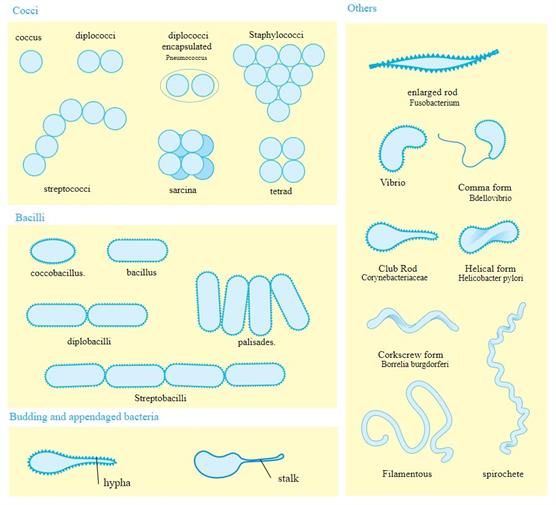
Bacterial morphology
Introduction:
|
|
|
|
|
|
The size ranges from less than 1 to 10μm in length and 0.2 to 1μm in width.
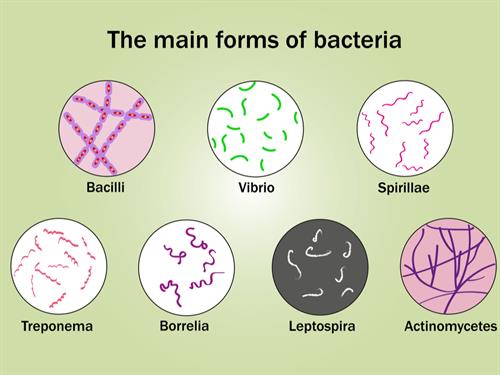
Different types of bacteria's and their size
- Bacteria may be motile (able to migrate independently) or non-motile (unable to move on their own). For motility, they have unique structures called flagella that facilitate locomotion found on the cell surfaces.
- Flagella are long, helical shaped structures, composed of subunits of proteins named flagellin. The base of the flagellum looks slightly broader, which is called as a hook. Hook joins filament to the motor portion of the flagellum called a basal body. The basal body is attached to the cytoplasmic membrane and cell wall. The location of flagella varies with bacterial species.
Classifications of bacteria:
1. Based on the arrangement of flagella:
Depending on the flagellum, bacteria are classified into four types.
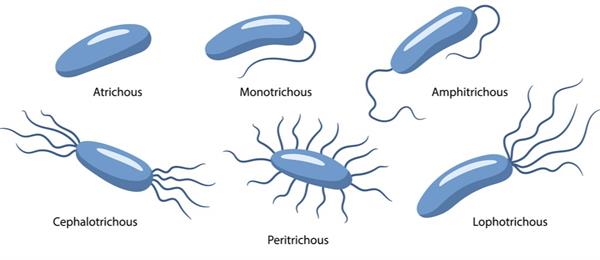
The types bacteria's based on the flagellum
Monotrichous: Having a single flagellum at one pole. E.g. Vibrio cholerae, Pseudomonas aeruginosa |
Lophotrichous: A cluster of flagella located at one end only. E.g. Pseudomonas fluorescens, Spirillum |
Amphitrichous: Either a single or cluster of flagellum present at both cell poles. E.g. Aquaspirillum serpens, Alcaligenes faecalis |
Peritrichous: Flagella arranged along the sides of the bacteria. E.g. Salmonella typhi, Escherichia coli |
2. Shape of the bacteria:
Depending on the shapes, bacteria are classified into three types.
Type of bacteria | Shape | Example |
| Cocci - Spherical shaped (Cocci - Plural; Coccus - Singular) | These are unicellular, spherical or elliptical shaped. | Streptococcus pneumoniae |
| Bacilli -Rod-shaped (Bacilli - Plural; Bacillus - Singular) | Rod-shaped or cylindrical bacteria that either remain single or in pairs. | Mycobacterium tuberculosis |
| Spirillum -Spiral shaped (Spirilla - Plural; Spirillum - Singular) | These are spiral or spring-like with multiple curvature and terminal flagella. | Treponema pallidum |
| Vibrio -Comma shaped (Vibrios - Plural; Vibrio - Singular) | These are curved and have the appearance of a comma. | Vibrio cholerae |

The different shapes of bacteria
i. Cocci - Spherical shaped bacteria: (Cocci - plural; Coccus - singular):
Example:
Streptococcus pneumoniae
Types of coccus bacteria include,
- Monococcus
- Diplococcus
- Streptococcus
- Tetracoccus
- Sarcina
- Staphylococcus
They are named based on how their bacterial cells are arranged.
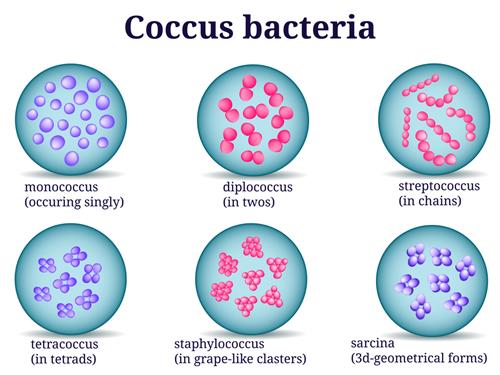
Types of coccus bacteria
ii. Bacilli - Rod-shaped bacteria: (Bacilli - plural; Bacillus - singular):
These are rod-shaped or cylindrical bacteria that either remain singly or in pairs.Example:
Mycobacterium tuberculosis
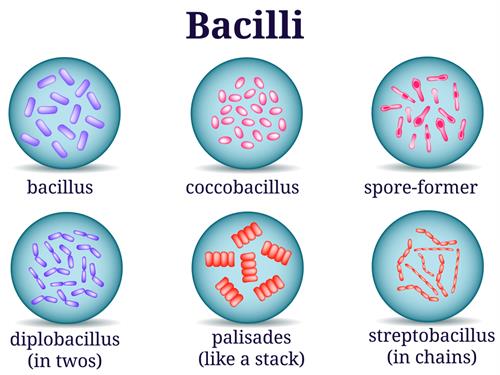
Types of bacilli bacteria
iii. Spirilla - Spiral shaped bacteria: (Spirilla - plural; Spirillum - singular):
These bacteria are spiral or spring-like with multiple curvature and terminal flagella.
Example:
Treponema pallidum
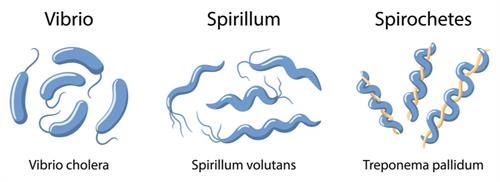
Types of spirilla bacteria
Important!
Atrichous bacteria have no flagella.
Reference:
https://commons.wikimedia.org/wiki/File:Bacterial_morphology_diagram.png#/media/File:Bacterial_morphology_diagram.svg
https://upload.wikimedia.org/wikipedia/commons/8/8c/Shapes_of_bacteria_and_size_comparisons.jpg
